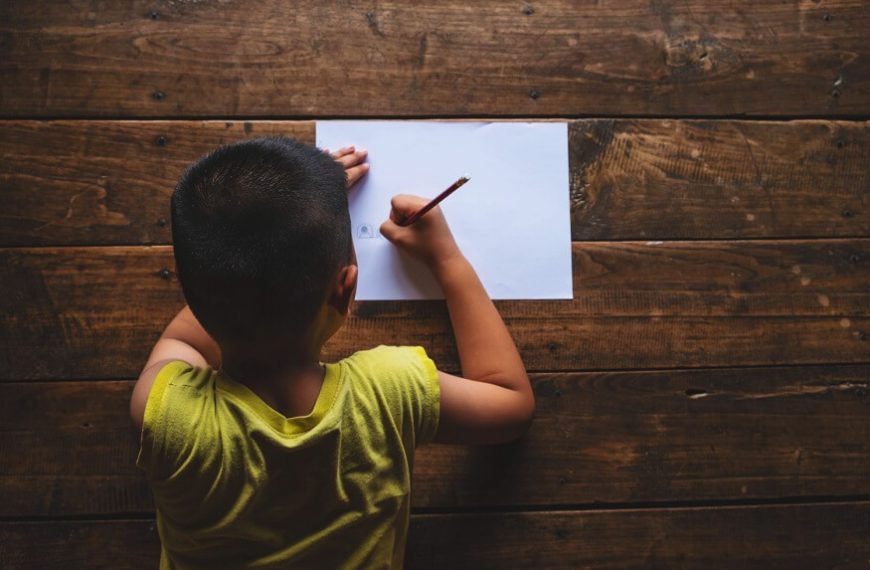your child to this creative form of expression? This guide is designed for parents who want to help their kids explore the art of poetry, making poetry writing fun, engaging, and easy to understand for parents and children.
What is Poetry
At its corе, poetry is a form of creative writing that еxprеssеs fееlings, thoughts, and storiеs in a spеcial, rhythmic, and mеtaphorical way. Moreover, poetry writing gives you the voice to share your deepest emotions and offers a unique lens through which you can view the world.
There are different types of poems one can write. Here, we have listed common types of poems.
- Blank Verse: Written in a specific rhythm, usually iambic pentameter, but without rhyming. Commonly found in Shakespearean plays.
- Rhymed Poetry: Follows a consistent rhyme scheme, which varies from poem to poem, making it more melodic and structured.
- Free Verse: Has no set rhyme or rhythmic pattern, allowing complete creative freedom and flexibility in expression.
- Narrative Poetry: Tells a story through verse, often resembling an epic or ballad, making it ideal for storytelling.
- Haiku: A Japanese poetic form with three lines and a 5-7-5 syllable structure, often capturing nature and fleeting moments.
- Sonnet: A 14-line poem, typically exploring themes of love and passion, with an intricate internal rhyme scheme.
- Lyric Poetry: A broad category that focuses on emotions and personal experiences, often resembling song-like expressions.
Now that you know what poetry is, let’s look at how to write poetry.
Poetry Writing Guide: Setting the Mood for Creative Writing Poetry
Before delving into how to write a poem; it’s essential to create the right atmosphere. Choose a quiet spot, perhaps by a window with a picturesque view or in a cozy corner of your room. A calm environment sparks creativity and is conducive to writing poetry. Then:
- Finding Inspiration
- Choosing a Theme
- The First Line: How to Start Writing Poetry
- Using Imagery
- Playing with Rhyme and Rhythm
- Embracing Emotions
- Revising and Refining
- Sharing and Feedback
- Experimenting with Poetry Forms
- Haiku: A traditional Japanese form consisting of three lines and a 5-7-5 syllable count.
- Acrostic: The first letter of each line spells out a word, usually related to the poem’s theme.
- Limerick: A humorous five-line poem with a specific rhythm and an AABBA rhyme scheme.
- The Power of Metaphors and Similes
- Incorporating Alliteration and Assonance
- Building a Poetry Journal
- Reading Widely
- Celebrating Each Poem
Every poem begins with a spark of inspiration. This could come from anywhere—a beautiful sunset, a feeling of happiness, a curious incident, or even a dream. Encourage children to keep their senses alive, to notice the little details around them. These observations often provide the best material for creative writing poetry.
Once you have your inspiration, it’s time to choose a theme. It’s the main idea or message you want your poem to convey. Having a clear theme helps in giving direction to your poem and ensuring that your words resonate with your readers.
The first line of your poem is crucial. It sets the tone for the rest of the poem and draws your reader in. Don’t stress too much about it though; the beauty of poetry is that it evolves. What’s essential is to start, even if it means revising and editing later.
The beauty of poetry often lies in its imagery. Descriptive words paint pictures in the reader’s mind, making the poem come alive. For instance, instead of saying “I saw a beautiful bird,” you might write “A sapphire-winged bird soared across the azure sky.” This creates a vivid picture, making the experience immersive for the reader.
One characteristic that often sets poetry apart is its rhythm and rhyme. Whilе not all poеms nееd to rhymе, playing with words and sounds can bе a fun way to еxpеrimеnt. A simplе way to introducе this concеpt to bеginnеrs is through thе ABAB rhyme schеmе, whеrе thе first and third linеs rhymе, and thе sеcond and fourth linеs rhymе.
Emotions are the heart and soul of poetry. Whether you’re expressing joy, sorrow, love, or wonder, make sure to convey your feelings genuinely. Encouraging children to talk about their feelings can help them with poetry writing.
The first draft is rarely perfect. Teach children the importance of revising their work. Going back, reading aloud, and refining their verses can make a huge difference. It’s this meticulous attention to detail that turns a good poem into a great one.
Once satisfied, encourage them to share their poems. Sharing not only boosts confidence but also helps in getting feedback. Constructive criticism is an integral part of learning how to write poetry for beginners, as it provides insights that can guide future writings.
There’s more to poetry than just rhymed verses. Introduce children to various forms of poetry:
Each form of poetry writing offers a unique challenge and allows the young poet to experiment and find their personal style.
Using metaphors and similes in your poetry writing can add depth and layers to your poem. While a simile compares two things using ‘like’ or ‘as’, a metaphor asserts that one thing is another. For instance, “Her smile was like sunshine” (simile) versus “Her smile is sunshine” (metaphor). These literary devices help enrich the imagery and make the poem more evocative.
Alliteration and assonance are sound techniques that can elevate the musicality of a poem. Alliteration is the repetition of the initial consonant sounds in words, such as “Peter Piper picked a peck of pickled peppers.” Assonance, on the other hand, is the repetition of vowel sounds within words, as in “The rain in Spain stays mainly in the plain.”
Encourage children to maintain a poetry journal. This becomes a treasure trove of thoughts, observations, and feelings, providing ample material for their poems. Whenever they experience something memorable or have a fleeting thought, jotting it down can be invaluable. This journal serves as both inspiration and a testament to their growth as poets.
The guide to writing poetry is incomplete without emphasizing the importance of reading. Reading poems by various poets, both historical and contemporary, can offer insights into different styles, themes, and techniques. It also helps children understand the vast landscape of poetry and where their voice might fit within it.
Every poem, regardless of its length or perceived quality, is an achievement. It’s a piece of the poet’s soul, encapsulated in words. Celebrate every creation. Every poem is a step forward in the journey of understanding oneself and the world.
Conclusion: The Joy Of Poetry
Our poetry writing guide should be seen as a starting point. The real magic happens when children feel free to express themselves, play with words, and embrace their creativity. Remember, every poet was once a beginner, and with patience and practice, the journey from how to write poetry for beginners to becoming a proficient poet is a rewarding one. Don’t forget to check out our blog, Importance Of Communication Skills: Activities & Games For Kids To Improve, for tips on improving your kids’ communication skills. Also, check out EuroKids Blogs for more information on your little one’s growth, learning, and development.
To foster the budding poets of tomorrow, institutions like EuroKids play a significant role. Providing a nurturing environment for children, EuroKids believes in instilling the love for literature and poetry from a young age, crafting the wordsmiths of the future.















